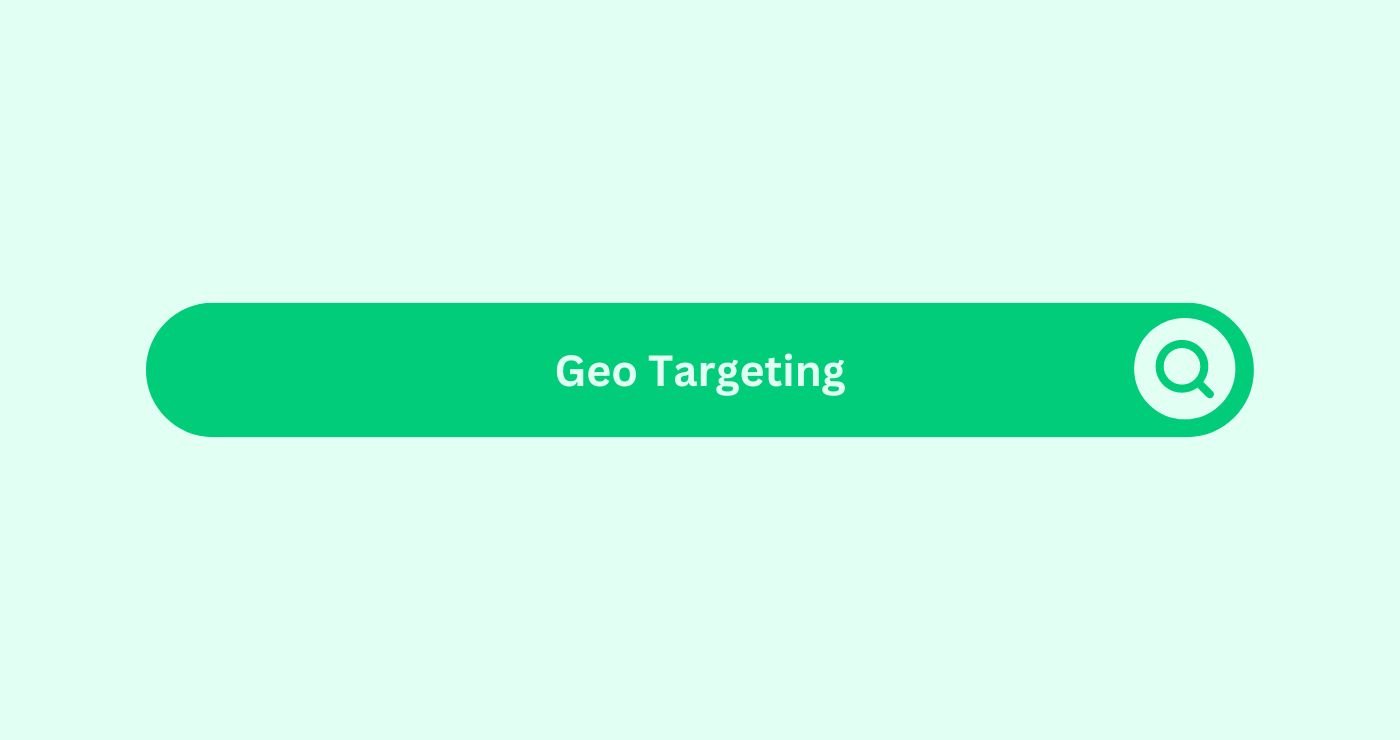Definition
Geotargeting is a digital marketing strategy used to deliver content or advertisements to users based on their geographic location. In the SEO space, geotargeting involves optimizing your website content and online presence to attract and engage users from specific regions, cities, or countries. This technique helps businesses tailor their marketing efforts to meet the needs and preferences of local audiences, thereby improving relevanceDefinition In SEO, relevance refers to the degree to which a... and engagementDefinition Engagement in content marketing refers to the deg....
Various methods can enable the implementation of geotargeting, such as setting geographic preferences in Google Search Console, utilising location-specific keywordsDefinition Keywords are crucial for SEO success as they conn..., developing localised content, and optimising business listings on platforms like Google My BusinessDefinition Google My Business (GMB) in social media marketin.... By targeting specific geographic areas, businesses can enhance their visibility in local search results, drive more targeted trafficDefinition In the context of SEO (Search Engine Optimisation..., and increase the likelihood of conversions from users in those areas.
How You Can Use
Geotargeting can be effectively used to optimise your SEO strategy and improve your website’s visibility in local search results. Here’s an example of how geotargeting can be practically applied:
Example:
Suppose you own a chain of coffee shops with locations in different cities. To attract local customersDefinition Customers, in the context of SEO, refer to indivi... and improve your SEO performance, you can implement geotargeting strategies as follows:
- Google My BusinessDefinition Google My Business (GMB) in social media marketin... Optimisation: Create and optimize a Google My BusinessDefinition Google My Business (GMB) in social media marketin... profile for each coffee shop location. Ensure each profile includes accurate business information, such as address, phone number, hours of operation, and customer reviewsDefinition Customer reviews in social media marketing....
- Localized Content: Develop content tailored to each location. For example, create blog posts highlighting the unique offerings, events, or promotions at each coffee shop. Use location-specific keywordsDefinition Keywords are crucial for SEO success as they conn... to optimize these posts for local search queries.
Blog Post Example:
vbnetCopy codeTitle: Discover the Best Coffee in [City Name]
Content: If you’re in [City Name], you don’t want to miss out on our signature blend at [Coffee Shop Name]. Located in the heart of [City Name], we offer a cozy atmosphere and delicious coffee made from locally sourced beans. Join us this weekend for a special tasting event!
- Location-Specific Landing PagesDefinition Landing pages are standalone web pages specifical...: Create dedicated landing pagesDefinition Landing pages are standalone web pages specifical... for each coffee shop location on your website. Optimize these pages with relevant keywordsDefinition Keywords are crucial for SEO success as they conn..., localized content, and structured dataDefinition Structured Data refers to a standardized format f... to enhance their visibility in local search results.
Landing Page Example:
vbnetCopy codeTitle: [Coffee Shop Name] - Your Favorite Coffee Spot in [City Name]
Content: Welcome to [Coffee Shop Name] in [City Name]! We pride ourselves on serving the finest coffee in town. Visit us at [Address] for a delightful experience. Check out our menu and upcoming events.
By using these geotargeting strategies, you can attract more local customersDefinition Customers, in the context of SEO, refer to indivi..., enhance your visibility in local search results, and improve your overall SEO performance.
Key Takeaways
- Increased RelevanceDefinition In SEO, relevance refers to the degree to which a...: Geotargeting helps deliver content and ads that are more relevant to local audiences, improving user engagementDefinition Engagement in content marketing refers to the deg....
- Improved Local SEODefinition Local SEO in social media marketing boosts online...: Optimizing your website and online presence for specific geographic areas enhances your visibility in local search results.
- Higher ConversionDefinition In the realm of SEO, Conversion refers to the pro... Rates: Targeted content and ads are more likely to convert users, as they cater to local needs and preferences.
- Enhanced Customer Experience: Providing localized content and information improves the overall customer experience and satisfaction.
- Competitive Advantage: Geotargeting allows businesses to stand out in local markets and attract more customersDefinition Customers, in the context of SEO, refer to indivi... than competitors who do not use this strategy.
FAQs
What is Geotargeting?
Geotargeting is a marketing strategy that delivers content or ads to users based on their geographic location to enhance relevanceDefinition In SEO, relevance refers to the degree to which a... and engagementDefinition Engagement in content marketing refers to the deg....
Why is Geotargeting important in SEO?
Geotargeting improves local SEODefinition Local SEO in social media marketing boosts online... by optimizing content for specific regions, increasing visibility in local search results, and attracting targeted trafficDefinition In the context of SEO (Search Engine Optimisation....
How do I implement Geotargeting on my website?
Implement geotargeting by setting geographic preferences in Google Search ConsoleDefinition Google Search Console is a free web service from ..., using location-specific keywordsDefinition Keywords are crucial for SEO success as they conn..., creating localized content, and optimizing Google My BusinessDefinition Google My Business (GMB) in social media marketin... listings.
How does Geotargeting improve local SEO?
Examples of geotargeting include localized blog posts, location-specific landing pagesDefinition Landing pages are standalone web pages specifical..., and Google My BusinessDefinition Google My Business (GMB) in social media marketin... profiles for different business locations.
How does Geotargeting improve local SEO?
Geotargeting improves local SEODefinition Local SEO in social media marketing boosts online... by increasing the relevanceDefinition In SEO, relevance refers to the degree to which a... of your content for local search queries, enhancing visibility in local search results, and attracting more local customersDefinition Customers, in the context of SEO, refer to indivi....
What tools can help with Geotargeting?
Tools like Google Search ConsoleDefinition Google Search Console is a free web service from ..., Google My BusinessDefinition Google My Business (GMB) in social media marketin..., local keyword researchDefinition Keyword research involves identifying and analysi... tools, and SEO pluginsDefinition SEO plugins enhance CMS or web browsers with feat... can help with geotargeting.
Can Geotargeting be used for ads?
Yes, geotargeting can be used for ads by targeting users based on their location, ensuring that ads are more relevant and effective.
How do I optimize my Google My Business profile for Geotargeting?
Optimize your Google My BusinessDefinition Google My Business (GMB) in social media marketin... profile by providing accurate business information, including location-specific keywordsDefinition Keywords are crucial for SEO success as they conn..., and encouraging customer reviewsDefinition Customer reviews in social media marketing....
What are location-specific keywords?
Location-specific keywordsDefinition Keywords are crucial for SEO success as they conn... include geographic terms related to your target area, such as city names, neighborhoods, and local landmarks.
How can Geotargeting help increase conversion rates?
Geotargeting increases conversionDefinition In the realm of SEO, Conversion refers to the pro... rates by delivering content and ads that are more relevant to local users, catering to their specific needs and preferences.




